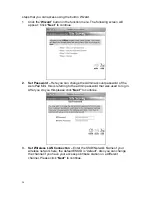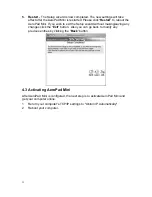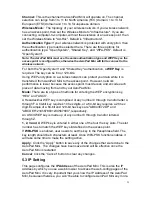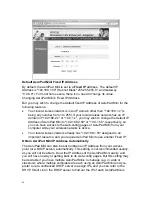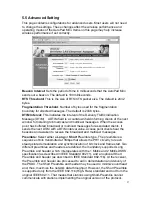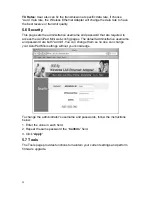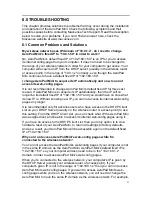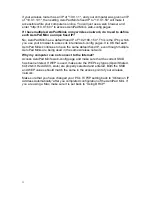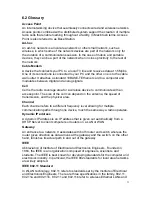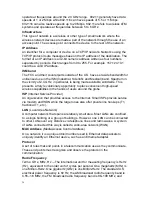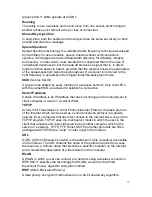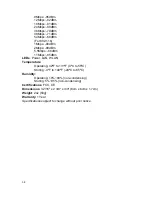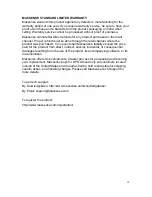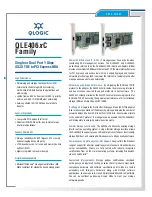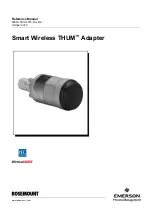
34
operate at frequencies around the 2.4 GHz range. 802.11 generally have data
speeds of 1 or 2 Mbps while 802.11b can have speeds of 5.5 or 11 Mbps.
802.11b can also realize speeds up to 20 Mbps. 802.11a refers to wireless ATM
systems and operates at frequencies between 5 to 6 GHz.
Infrastructure
This type of network is a wireless or other type of small network where the
wireless network devices are made a part of the network through the use of an
access point. The access point connects the device to the rest of the network.
IP Address
An identifier for a computer or device on a TCP/IP network. Networks using the
TCP/IP protocol route messages base on the IP address of the destination. The
format of an IP address is a 32-bit numeric address written as four numbers
separated by periods. Each ranges from 0 to 255. For example, 157.124.10.1
could be a valid IP address.
ISM band
The FCC and their counterparts outside of the U.S. have set aside bandwidth for
unlicensed use in the ISM (Industrial, Scientific and Medical) band. Spectrum in
the vicinity of 2.4 GHz, in particular, is being made available worldwide. This
presents a truly revolutionary opportunity to place convenient high-speed
wireless capabilities in the hands of users around the globe.
ISP
(Internet Service Provider)
An organization that provides access to the Internet. Small ISPs provide service
via modem and ISDN while the larger ones also offer private line hookups (T1,
fractional T1, etc.).
LAN
(Local Area Network)
A computer network that spans a relatively small area. Most LANs are confined
to a single building or a group of buildings. However, one LAN can be connected
to other LANs over any distance via telephone lines and radio waves. A system
of LANs connected this way is called a wide-area network (WAN)
MAC Address
(Media Access Control Address)
On a network, it is a unique 48-bit number used in Ethernet data packets to
uniquely identify an Ethernet device, such as an Ethernet adapter.
Protocol
A set of rules that end points in a telecommunication use as they communicate.
These end points must recognize and observe the protocol in the
communication.
Radio Frequency
Terms: GHz, MHz, Hz —The international unit for measuring frequency is Hertz
(Hz), equivalent to the older unit of cycles per second. One megahertz (MHz) is
one Million-Hertz. One gigahertz (GHz) is one Billion-Hertz. The standard U.S.
electrical power frequency is 60 Hz, the AM broadcast radio frequency band is
0.55–1.6 MHz, the FM broadcast radio frequency band is 88–108 MHz, and

